The Syngonium, also known as the Arrowhead Plant, is a favorite among houseplant enthusiasts due to its beautiful foliage and easy care. Propagating Syngonium plants is a simple and rewarding process that allows you to expand your collection or share plants with friends. Follow these easy steps to multiply your Syngonium.
Introduction
The Syngonium is a member of the aroid plant family, which includes popular varieties like Philodendron, Monstera, and Anthurium. Native to the tropical rainforests of Central and South America, this plant is prized for its attractive, arrow-shaped leaves that come in a variety of colors and patterns. Similar to Aglaonema and Epipremnum, the Syngonium is not only beautiful but also easy to propagate.
Taking Cuttings from the Mother Plant
Taking cuttings from a mature, healthy syngonium plant is the most straightforward way to propagate new plants.
Selecting Cuttings
When taking syngonium cuttings, you want to select healthy stems that have a few leaves and aerial roots. The cuttings should be 3-6 inches long. Using a clean, sharp pair of scissors or gardening shears, cut the stems right below a node.
Rooting the Cuttings
After taking your cuttings, you have a couple options for rooting them. You can place them directly into moist potting mix and enclose the pot in a plastic bag to create a greenhouse environment. Checking regularly to make sure the soil stays moist. Another option is to place the cuttings in water first, allowing the aerial roots to develop before transplanting into soil after a few weeks. Changing the water every few days prevents rotting.
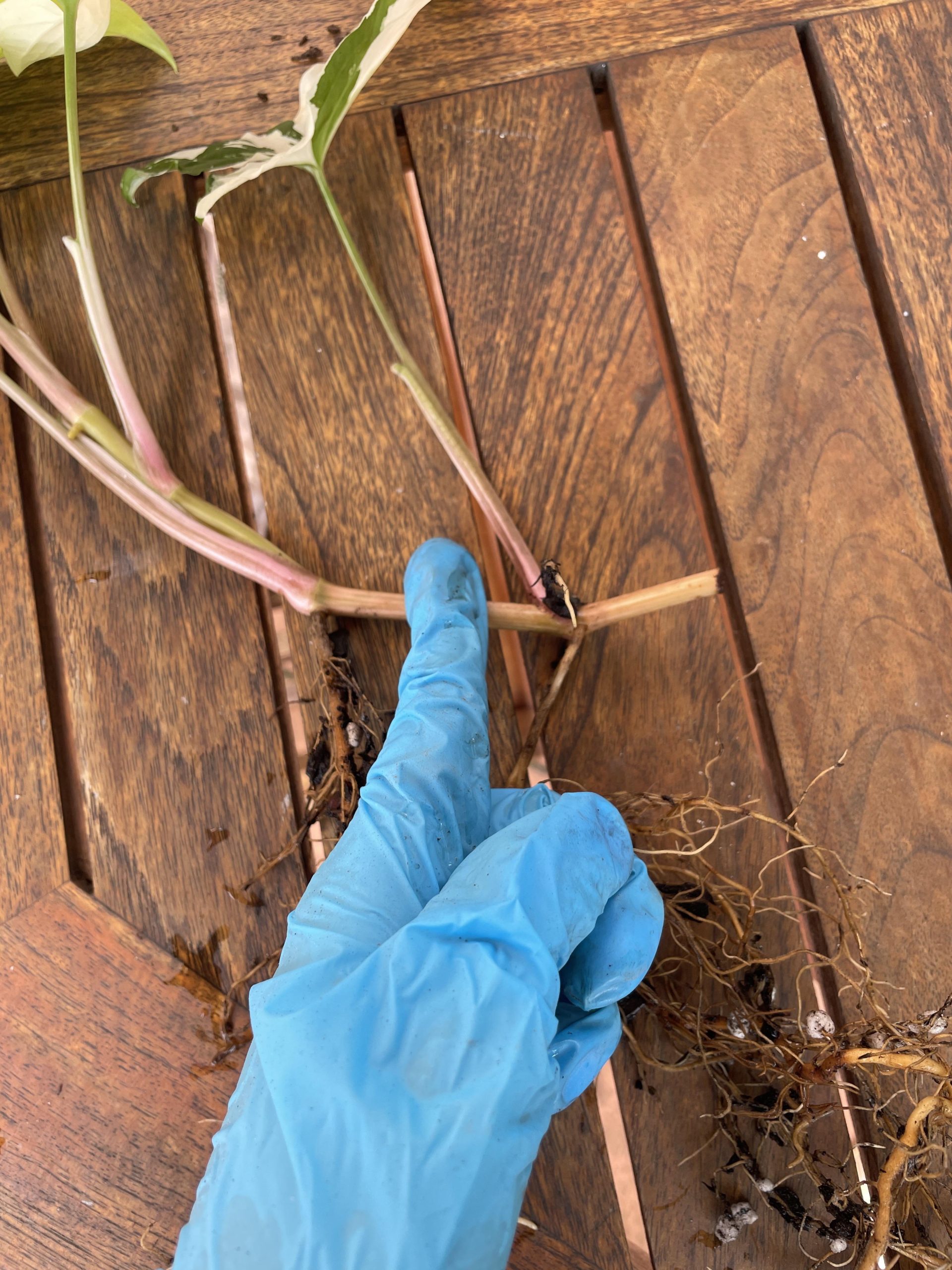
Caring for New Plants
Once the syngonium cuttings have developed a good root system in water or soil, they can be transplanted into their own pots. Use a well-draining potting mix and place the plants in bright, indirect light while they establish. Propagated syngonium typically grow quickly when given proper care.
Propagating by Division
Mature, overgrown syngonium plants can be divided into separate plants. This allows you to control the size while propagating.
Selecting a Plant to Divide
When dividing a syngonium, it’s best to select an overgrown plant that needs to be trimmed back anyway. Look for a rootbound plant with crowded growth. The plant should be healthy with no signs of disease or pest problems.
Dividing the Rootball
To divide the plant, carefully remove it from its container and massage the old potting mix away from the tangled rootball. Then, use a clean, sharp knife to cut or tear the rootball into smaller sections – making sure each divided section has plenty of healthy roots attached.
“Explore the Exceptional 2023 Syngonium Collection: A Curated Selection of the Rarest and Most Unique Varieties Available.”
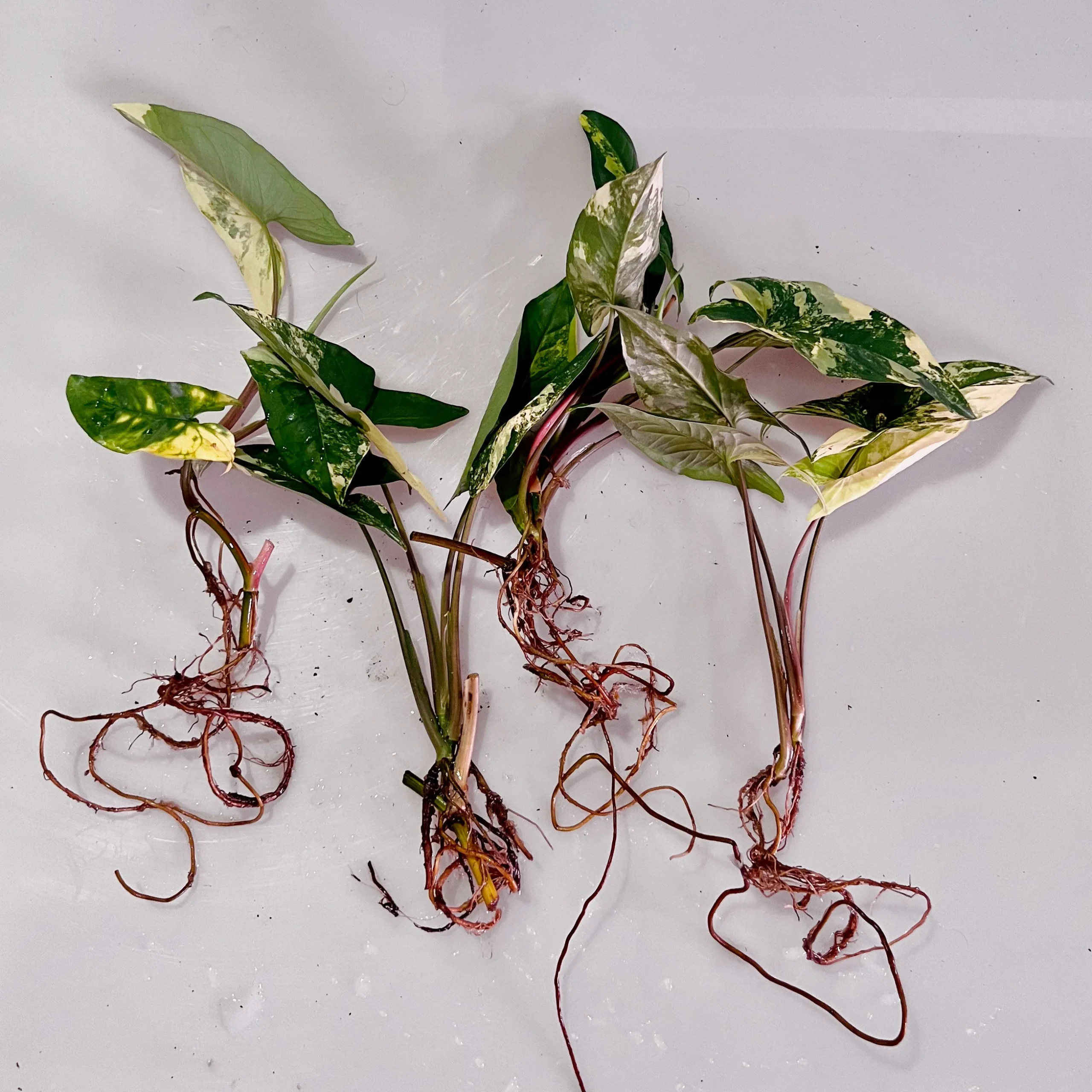
Caring for Divided Plants
The divided syngonium sections can now be repotted as individual plants. Repot into appropriately sized containers using fresh potting mix. Water well and place them in bright indirect sunlight. Dividing stimulates new growth, so expect the plants to show rapid growth over the next few months. Monitor watering and fertilization needs more closely during this period.
Growing Syngonium from Seeds
While less common, it is possible to propagate syngonium by collecting and planting seeds from a mature plant.
Collecting and Storing Seeds
If your syngonium produces berry-like seed pods after flowering, wait until the pods turn brown and split open to collect the seeds inside. Rinse the sticky coating off the seeds then spread out to dry completely before storing. Place the dry seeds in an airtight container in the refrigerator for up to a year.
Planting and Caring for Seedlings
When ready to plant, soak the syngonium seeds overnight before sowing 1/4 inch deep into sterile seed starting mix. Cover lightly with mix then enclose in a plastic bag or dome to maintain high humidity as they germinate. Place container in bright, indirect light and 75-80°F temperature range.
Once sprouted, remove the humidity dome. Care for the seedlings under grow lights, watering when the top inch of soil is dry and fertilizing every 2-3 weeks with half strength houseplant fertilizer. As the plants grow, transplant into larger containers with drainage holes before moving outdoors into partial sun.
Troubleshooting Propagation Problems
While syngonium propagates easily under the right conditions, you may encounter some issues. Here is how to troubleshoot the most common problems.
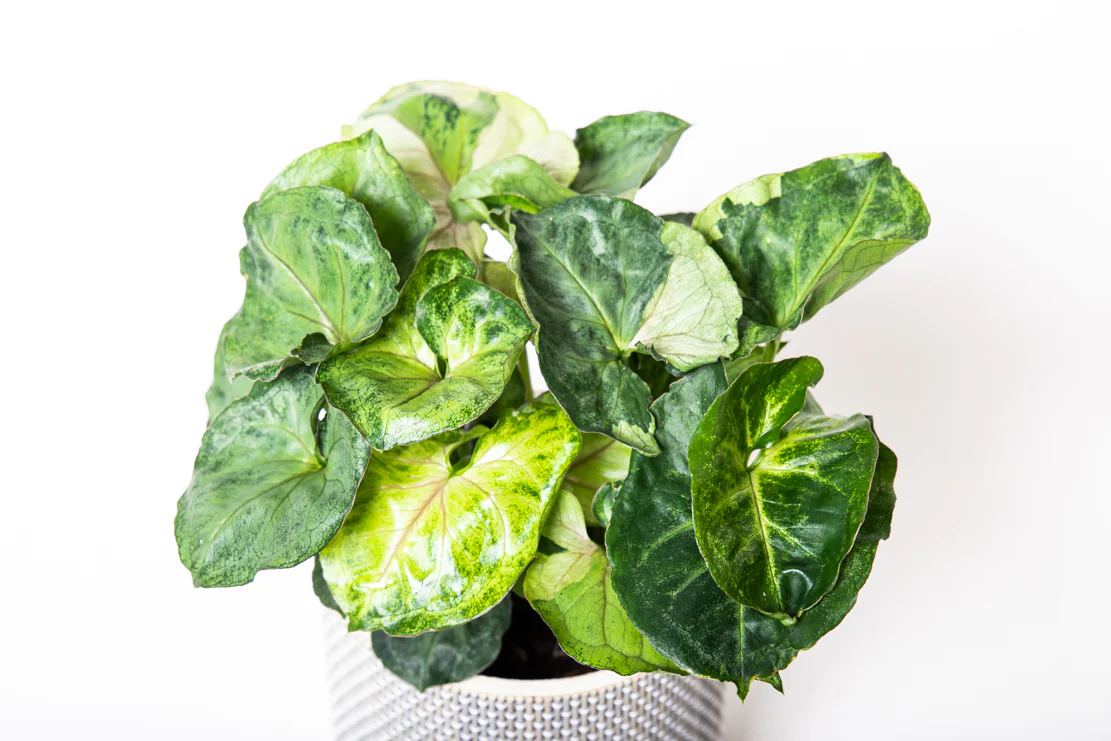
Root Rot
Stems sitting in overly wet soil or water can develop root rot. This fungus causes brown, mushy roots that stunt growth. To prevent it, use well-draining soil mixes and change the water for cuttings frequently. Improve airflow and reduce watering slightly if rot begins.
Little to No New Growth
Lack of new growth following propagation is usually tied to environmental factors. Check that the plants receive adequate warmth and indirect sunlight. Also make sure young plants are not rootbound. Fertilize regularly to encourage faster growth after propagation.
Leaf Yellowing
Yellow, drooping leaves may indicate over or under-watering issues. Check soil moisture more frequently while new plants establish roots. As they mature, allow more time to dry out between waterings. Leaf yellowing can also stem from lack of nutrients – use quarter strength fertilizer.
Syngonium species are the most sought after by aroid plant lovers
Conclusion
Propagating syngonium through stem cuttings, division, and sometimes seeds is rewarding and helps multiply your plant collection. Follow basic care guidelines to successfully root new plants and troubleshoot any issues that may arise. Taking cuttings is the easiest method while division controls size. In a matter of months, you can have several brand new syngonium plants!





















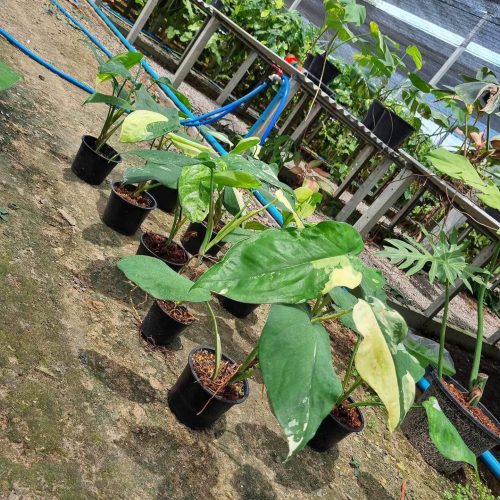
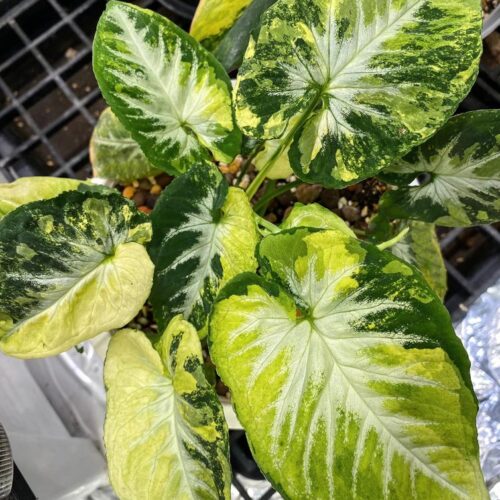
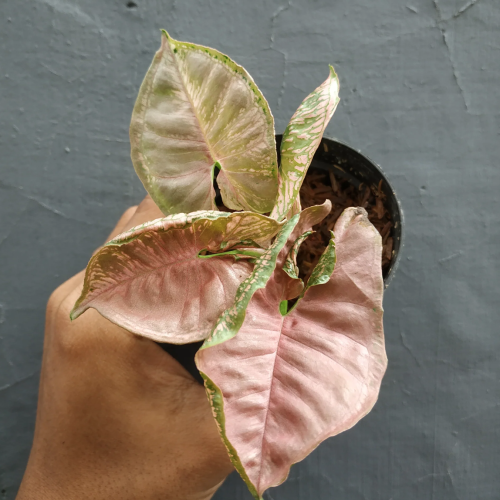
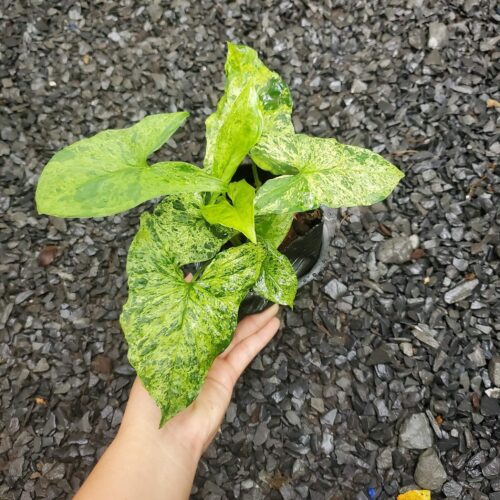
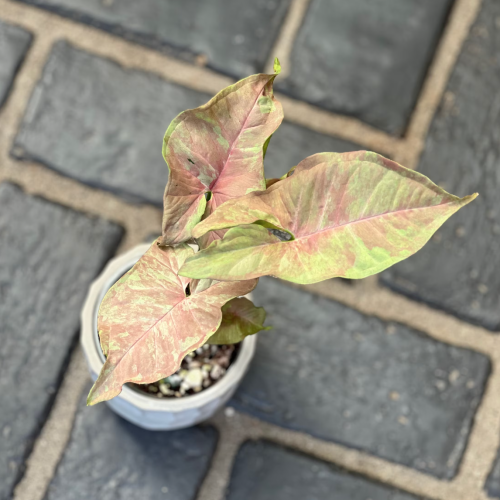

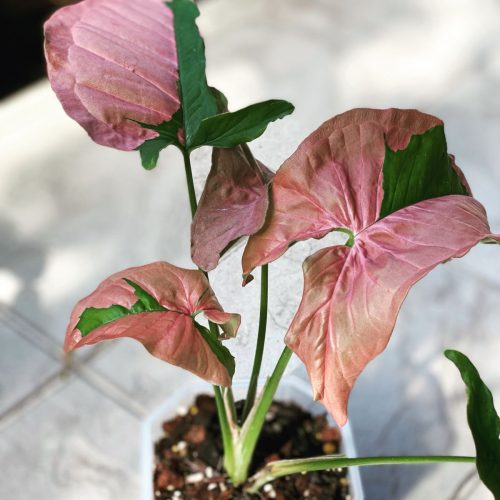


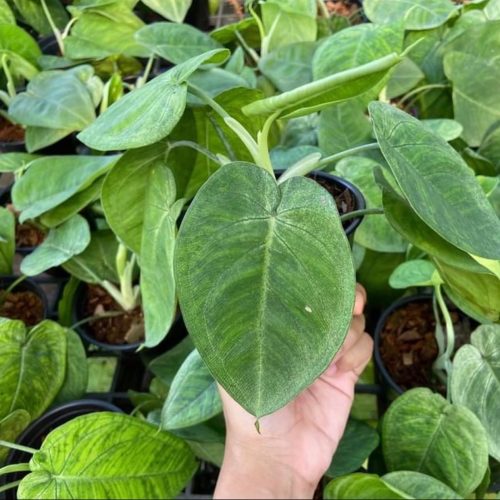
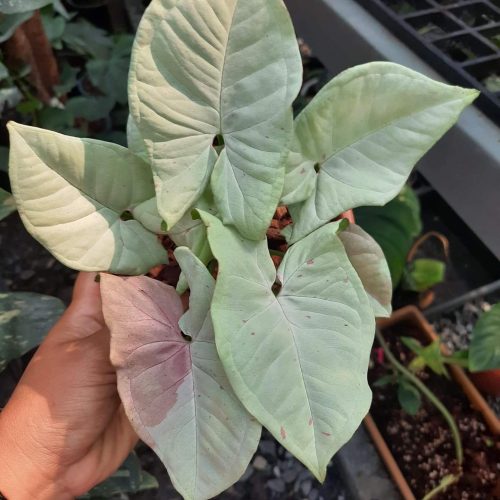

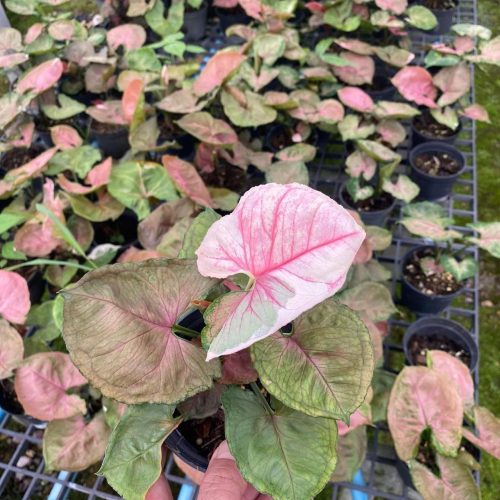
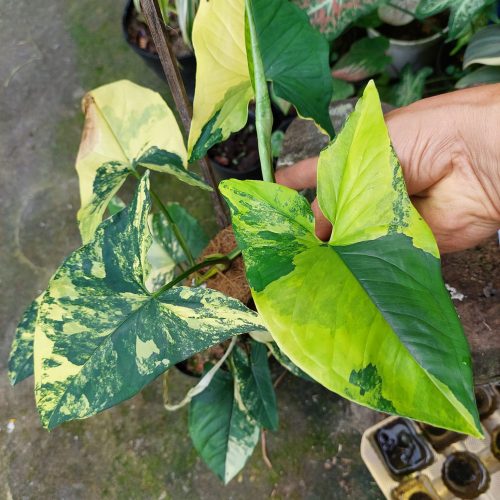
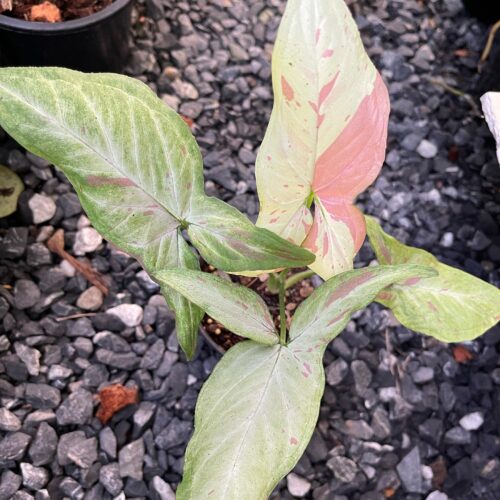
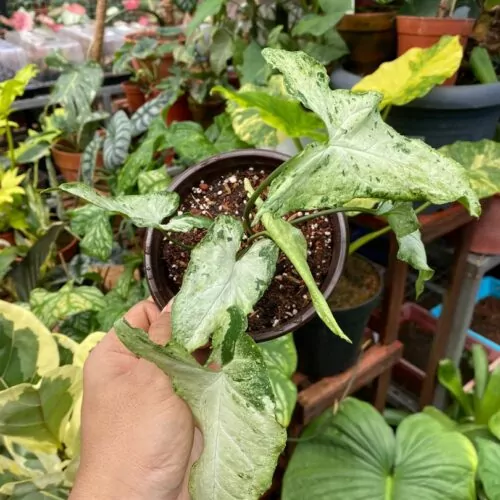
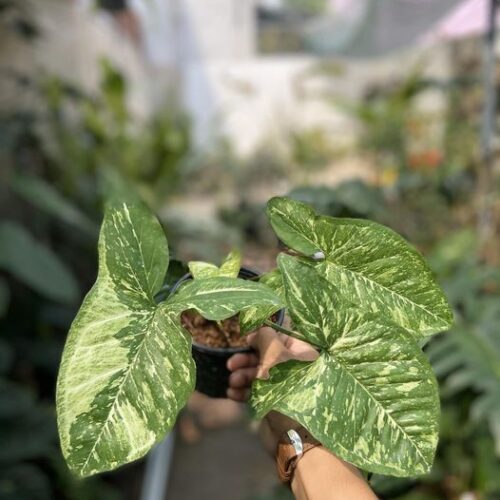

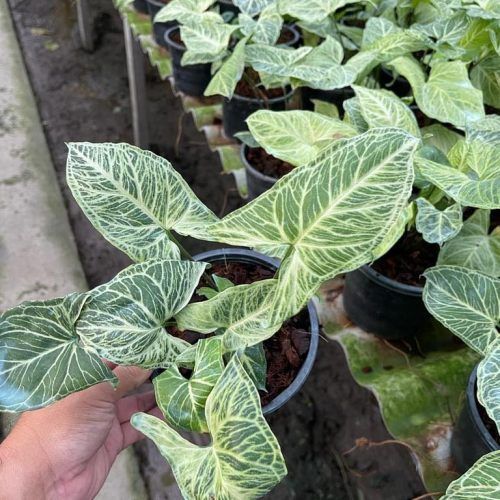

2 thoughts on “Easy Steps to Multiply Your Syngonium”